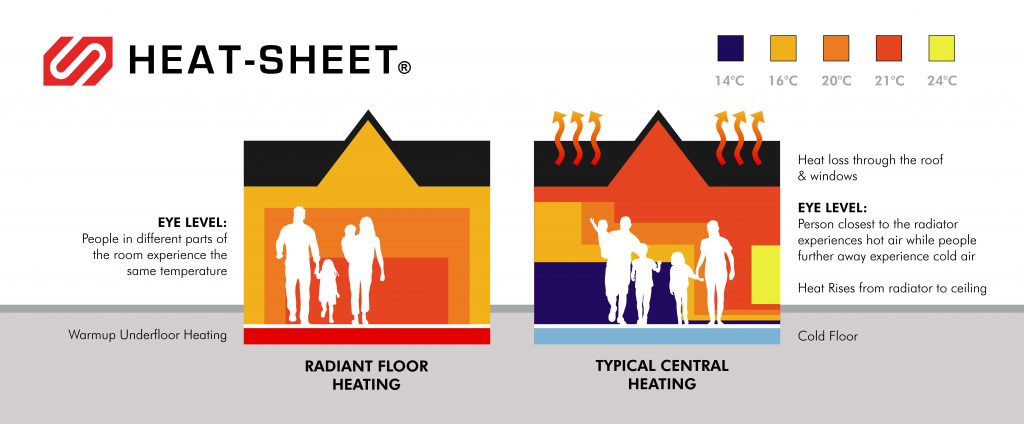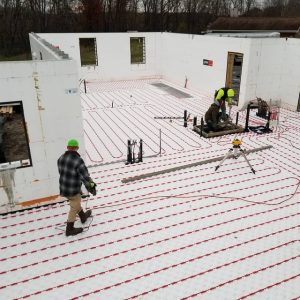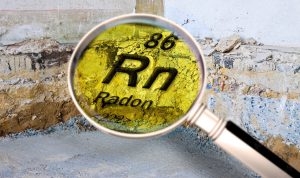Radiant Heat Flooring (RHF) systems offer far more comfort than forced air systems, radiators, and other popular heating methods. They heat the right part of the room, they’re easy to control, and they don’t interfere with your daily routine. Unlike radiators, they don’t pose a safety hazard to children and pets. And while forced air heaters are noisy and dusty, RHF systems are silent and clean.
In this post, we’ll deep-dive into all the reasons that place hydronic radiant floors at the pinnacle of home comfort.
No Sharp Edges or Hot Surfaces
Hydronic RFH systems work similarly to radiators — they circulate hot water and give off radiant heat.
The significant difference between the 2 hydronic heating methods is safety. If you’ve got kids or pets, radiators present 2 major safety risks. Their scorching surface can scald skin on contact, and their hard, metallic edges can cause severe trauma on impact.
Radiant floors, on the other hand, never get dangerously hot. Because they cover the area of an entire room, they simply don’t need scalding-hot water to be efficient, like their radiator cousins. On the contrary — radiant floors are a pleasure to walk on, especially on chilly wintry days.
And, being embedded in the floor, RHF systems are safely out of the way and don’t present any tripping or edge hazards either.
The Right Part of the Room Is Kept Warm
Apart from being safe, radiant floors also do a better job of keeping dwellers warm than other heating methods. That’s because RFH systems distribute heat evenly and capitalize on the natural process through which heated air rises.
Ironically, the same process causes forced air systems to heat a room’s ceiling instead of its occupants. When hot air is blown through the louvers, its momentum causes it to rise to the top portion of the room rapidly. This movement displaces the cooler, denser air, which settles on the bottom portion of the room — right where the people are. When this happens, the room’s occupants reach for their thermostat and crank up the heat. Not very efficient, is it?
In contrast, hydronic radiant floors slowly disperse heat right where people need it the most — within about 6 feet of the flooring surface.

No Cold Spots
Since radiant floor systems cover the entire floor area, there’s no way for cold spots to appear in the room. Contrast this with radiator, or furnace-heated spaces, where the uneven distribution of heat can leave certain parts of the room feeling colder than others.
What’s more, radiant heat systems don’t follow the same cyclical heating pattern as forced air systems, where furnaces turn on and off to maintain the target temperature. Without this abrupt, stop-and-go supply of heat, radiant floors leave occupants feeling consistently warm at all times.

Don't miss a thing!
Subscribe for exclusive content, insider industry news and limited edition webcasts.
No Noise or Dust, Reduced Dryness
RHF systems hum away quietly beneath the surface of a floor, and unlike forced air systems, they don’t rely on convection — or air movement — to heat a space. With the lack of air movement, dust and other allergens have no way of getting spread around the house.
Heating by convection is a different story. When the air gets circulated through a network of ducts, it picks up dust, pollen, and other allergens that accumulate in the ductwork. These pollutants get spewed out into the occupied areas that the air is supposed to heat. The result? Itchy throats and blocked sinuses — hardly a recipe for home comfort. Sadly, keeping the ductwork free of dust can be an expensive affair, with clean-ups costing $400 and up, depending on the size of the home.
In addition to being dust and noise-free, radiant heat also doesn’t dry out the surroundings as much as air that’s passed through a high-temperature heat exchanger.
Design Flexibility
By opting for hydronic radiant floors instead of forced air or radiators, you give yourself far greater design flexibility.
The network of ducts that inevitably comes with every forced-air system is quite obtrusive, and a home’s structural and architectural features must be designed and built around it.
Radiators are less cumbersome, but their location becomes an essential variable in architectural design.
On the other hand, hydronic radiant floors only require a network of PEX tubes and a layer of insulation to operate. These tubes are narrower than an inch in diameter and get installed on a horizontal plane along the floor’s surface. No clunky ducts to squeeze in between studs and joists — the floor assembly simply gets a little thicker.

Wrapping It Up
Radiant floors are the oldest space heating method used by humankind, and yet they’re still the most comfortable and efficient way of staying warm. By choosing a hydronic RHF system for the homes you build, you provide your potential buyers with:
- A safe, quiet heating system
- Comfortable, efficient heat in the right part of the room
- A healthy indoor environment that’s free of dust or other pollutants
And that’s not all — you also benefit from highly flexible design options because you don’t have to worry about drawing your structure around a network of ducts.






